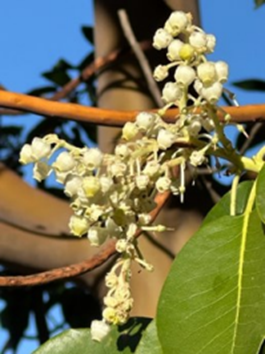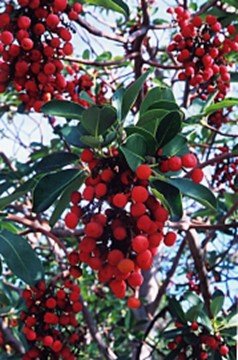Madrone
Arbutus menziesii
Madrones are easily identified by their beautiful bark. The new layers of bark are a bright pistachio-green, darkening to brick-red layers that crack and peel off during the summer.
Madrones have bright-red berries in the fall, and urn-shaped white flowers in the spring.
Madrones are distinguished from their manzanita relatives by their mature size, and thesize of their leaves. Manzanita leaves are generally smaller, 1-2” long, while madrone leaves are about 3–5” long. Manzanitas rarely grow over 15’, while madrones can grow over 100’ high.
Stewardship Considerations
Madrones are important native trees and, like oaks, should be preserved if possible. Pruning madrones makes them susceptible to disease. You should remove only dead and dying wood.
Madrones are slow-growing, which makes them less tolerant of aggressive pruning.
Madrones may stump-sprout.
Prune madrones during dry weather to prevent disease. Excessive summer pruning, however, may result in sunburn and die-back. Preserve enough of the canopy to shade lower branches.
Bottom left: Stump-sprouting madrone.
Bottom left Center: madrone blossoms in spring.
Bottom right Center: madrone berries in fall.
Bottom right: Madrone leaf, close-up.
Print this ID Card
Learn more about madrone trees from the California Native Plant Society





